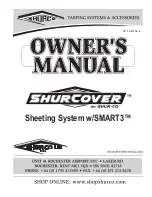
3
1008
.GB
C
Operation
1
Starting up the truck
F
Before the truck can be commissioned, operated or a load lifted, the driver must ensure that there is
nobody within the hazardous area.
Inspect the entire truck (especially the wheels and the load handler) for visible signs of damage.
1.1
Travel, Steering, Braking, Lifting, Lowering
Travel
– The truck can be pulled or pushed from the tiller (2) handle (4).
Steering
– Move the tiller (2) to the left or right, to a range of approx. 115°.
Braking
In an emergency you can brake the truck by lowering the load.
– Press handle (3) in direction “S” to lower the load.
o
Braking with the tiller parking brake
– Apply the tiller parking brake (5) until the brake engages.
– Gently pull the lever to brake the truck during travel.
o
Braking with the foot parking brake
– Push the foot parking brake (9) in direction “A”. The brake shoe acts on the wheels and blocks them.
– To release the brake (9) depress the left side of the pedal in direction "B", the spring pushes the
brake shoe back, releasing the wheels.
F
Never attempt to apply the brake manually.
Lifting
M
Before collecting a load, the driver must ensure that it is correctly palletised and that the capacity of
the truck is not exceeded.
Do not lift long loads at an angle.
– Fully insert the truck and the load handler underneath the load.
– Press handle (3) in direction “H”.
– Lift the load fork by moving the tiller (2) up and down, until the desired lifting height is achieved.
o
Fast lift
Z
Rapid lift is effective for loads of up to 120 kg. For pallets over 120 kg, rapid lift is applied for the
distance under the pallet. As soon as the load is raised, the truck switches to normal lift.
Lowering
– Press handle (3) in direction “S” to lower the load.
– Set the handle (3) to the “neutral” position.
Z
When moving a laden truck, the handle (3) must be in the “neutral” (4) position.
1.2
Parking the truck securely
F
Do not park the truck on slopes and always lower the forks fully.
When transporting the truck on a lorry or trailer, it must always be loaded correctly with chocks applied
to the wheels.
3
1008
.GB
C
Operation
1
Starting up the truck
F
Before the truck can be commissioned, operated or a load lifted, the driver must ensure that there is
nobody within the hazardous area.
Inspect the entire truck (especially the wheels and the load handler) for visible signs of damage.
1.1
Travel, Steering, Braking, Lifting, Lowering
Travel
– The truck can be pulled or pushed from the tiller (2) handle (4).
Steering
– Move the tiller (2) to the left or right, to a range of approx. 115°.
Braking
In an emergency you can brake the truck by lowering the load.
– Press handle (3) in direction “S” to lower the load.
o
Braking with the tiller parking brake
– Apply the tiller parking brake (5) until the brake engages.
– Gently pull the lever to brake the truck during travel.
o
Braking with the foot parking brake
– Push the foot parking brake (9) in direction “A”. The brake shoe acts on the wheels and blocks them.
– To release the brake (9) depress the left side of the pedal in direction "B", the spring pushes the
brake shoe back, releasing the wheels.
F
Never attempt to apply the brake manually.
Lifting
M
Before collecting a load, the driver must ensure that it is correctly palletised and that the capacity of
the truck is not exceeded.
Do not lift long loads at an angle.
– Fully insert the truck and the load handler underneath the load.
– Press handle (3) in direction “H”.
– Lift the load fork by moving the tiller (2) up and down, until the desired lifting height is achieved.
o
Fast lift
Z
Rapid lift is effective for loads of up to 120 kg. For pallets over 120 kg, rapid lift is applied for the
distance under the pallet. As soon as the load is raised, the truck switches to normal lift.
Lowering
– Press handle (3) in direction “S” to lower the load.
– Set the handle (3) to the “neutral” position.
Z
When moving a laden truck, the handle (3) must be in the “neutral” (4) position.
1.2
Parking the truck securely
F
Do not park the truck on slopes and always lower the forks fully.
When transporting the truck on a lorry or trailer, it must always be loaded correctly with chocks applied
to the wheels.






































